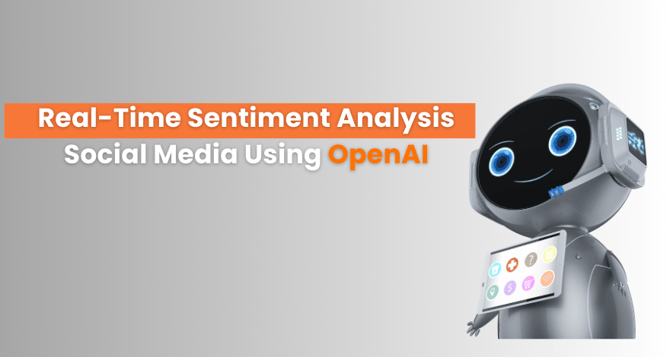Real-Time Sentiment Analysis for Social Media Using OpenAI
This article delves into the implementation of real-time sentiment analysis on social media using OpenAI. By leveraging advanced natural language processing, it provides swift and accurate insights into public opinions, enabling proactive responses to emerging trends in the dynamic world of social media.

Social media has become an essential part of our lives. We use it to stay connected with friends and family, to learn about current events, and to share our thoughts and opinions.
Businesses and organizations are also increasingly using social media to connect with their customers and to track their brand reputation. However, with the vast amount of social media data being generated every day, it can be difficult to keep up with all of the conversations that are happening.
Real-time sentiment analysis is a powerful tool that can help businesses and organizations understand what people are saying about them on social media. It can also help them to identify emerging trends and to track their brand reputation.
 OpenAI GPT models are a family of large language models that are trained on a massive dataset of text and code. GPT models are capable of generating text, translating languages, writing different kinds of creative content, and answering your questions in an informative way.
OpenAI GPT models are a family of large language models that are trained on a massive dataset of text and code. GPT models are capable of generating text, translating languages, writing different kinds of creative content, and answering your questions in an informative way.
GPT models can also be used for real-time sentiment analysis. In this article, we will discuss how to use OpenAI GPT models to build a real-time sentiment analysis system for social media.
To build a real-time sentiment analysis system for social media using OpenAI, you will need to:
- Collect social media data: You can use a social media API to collect data from social media platforms such as Twitter, Facebook, and Instagram.
- Preprocess the data: This involves cleaning the data and removing any noise or irrelevant information.
- Fine-tune a GPT model: You can fine-tune a GPT model on a labeled dataset of social media posts. This dataset should contain examples of social media posts with their corresponding sentiment labels.
- Use the model to predict sentiment in real-time: Once the model is fine-tuned, you can use it to predict the sentiment of new social media posts in real-time.
Example
Here is an example of how to build a real-time sentiment analysis system for Twitter using OpenAI:
1. Install the Necessary Python Libraries
Pythonimport tweepyimport openai |
2. Authenticate with the Twitter API
Pythonconsumer_key = "YOUR_CONSUMER_KEY"consumer_secret = "YOUR_CONSUMER_SECRET"access_token = "YOUR_ACCESS_TOKEN"access_token_secret = "YOUR_ACCESS_TOKEN_SECRET"auth = tweepy.OAuthHandler(consumer_key, consumer_secret)auth.set_access_token(access_token, access_token_secret)api = tweepy.API(auth) |
3. Load the OpenAI GPT-3 Model
Pythonmodel = openai.Model("gpt-3") |
4. Fine-tune the Model on a Labeled Dataset of Tweets
|
|
5. Use the Model to Predict the Sentiment of New Tweets in Real-time
|
|
Output:positivenegative |
This is just a basic example of how to build a real-time sentiment analysis system for social media using OpenAI. You can customize the system to meet your specific needs. For example, you can use a different social media platform, or you can collect data from multiple social media platforms. You can also use a different GPT model, or you can fine-tune the model on a different dataset.
For example, you can use a different social media platform, or you can collect data from multiple social media platforms. You can also use a different GPT model, or you can fine-tune the model on a different dataset.
Conclusion
Real-time sentiment analysis is a powerful tool that can help businesses and organizations understand what people are saying about them on social media. It can also help them to identify emerging trends and to track their brand reputation.


%201-1.webp)


.png?width=344&height=101&name=Mask%20group%20(5).png)
















